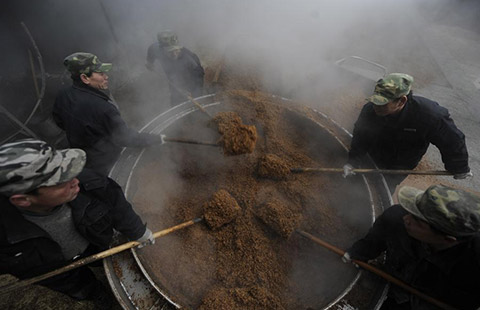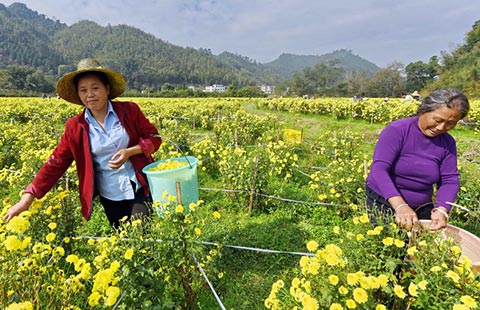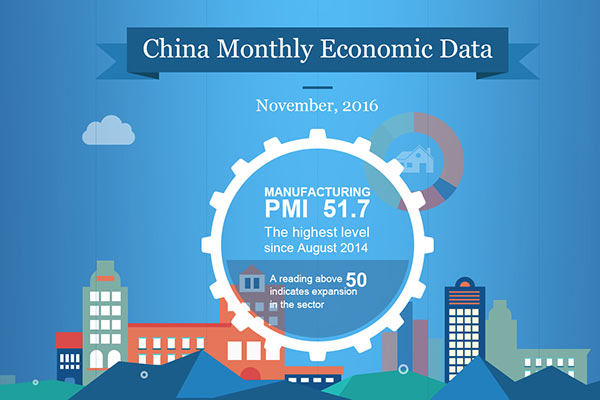New five-year plan brings hope to China's west
BEIJING - China's new five-year plan on developing its western regions will promote sustainable and healthy development and boost the confidence of overseas investors.
Chinese Premier Li Keqiang said on Friday during a meeting that the 13th Five-Year (2016-2020) Plan period is a crucial time for western regions to achieve transformation and upgrading.
He said the regions should push forward supply-side structural reform, moderately expand demand, boost innovation, continue to implement the west development strategy, and strengthen coordination between it and other major strategies such as the Belt and Road Initiative and development of the Yangtze River Economic Belt.
The fundamental way to develop the regions is by enhancing their endogenous growth through innovation, reform and opening-up, Li said.
China launched its "go west" strategy in 2000 to boost economic development of 12 western provincial-level regions -- Chongqing, Sichuan, Guizhou, Yunnan, Tibet, Shaanxi, Gansu, Ningxia, Xinjiang, Inner Mongolia, Guangxi and Qinghai -- that are home to more than 400 million people.
Under the strategy, the western regions enjoy support in infrastructure construction, foreign investment, environmental protection, education and talent retention.
From 2000 to 2016, the Chinese government invested 6.35 trillion yuan ($914 billion) in 300 major projects, mostly in infrastructure and energy, in western regions.
In 2016 alone, 743.8 billion yuan was invested in 30 major projects in western regions, according to the National Development and Reform Commission.
China's "go west" strategy has brought western regions to their best period of development in history and promoted coordinated growth of the regional economy, said Gao Xincai, vice president of Lanzhou University in Gansu Province.
The total GDP of the 12 regions included in the "go west" strategy accounted for only 17 percent of the country's total in 2000, but the figure had risen to 21.2 percent by the end of 2015, official data showed.
As the Chinese economy urgently needs to address entrenched structural imbalances and find sustainable growth momentum in the next five years, new content should be added to the "go west" strategy, said Chen Yao, deputy director of the Research Center on Western Region Development of Chinese Academy of Social Sciences.
He noted that the industrial structure in western regions should be transformed into a high value-added and environment-friendly one advocating innovation and technology.
Indeed, as Premier Li stressed in the meeting, infrastructure construction and ecological protection are two key elements in promoting the sustainable development of western regions. He urged efforts to protect the environment, improve road and water infrastructure, and ensure the quality of drinking water for rural residents.
Li called for efforts to develop an advanced manufacturing sector and emerging sectors, and promote the development of industries with "ethnic characteristics" such as medicine and traditional handicrafts.
The new five-year plan also aims to create a healthy investment environment in western regions to help investors, advance government administrative reform and improve services, said Chen.
More efforts should be made to streamline administrative approvals, reduce taxation and fees, cut transaction costs, improve the business environment, promote entrepreneurship, and encourage private capital to help develop western regions, according to the plan.
In the 16 years since the "go west" strategy was implemented, more overseas investors have come to western China in search of opportunity.
More than 200 German companies have set up operations in Sichuan in manufacturing, environmental services, vocational education and other industries, according to the 16th Western China International Fair held in November in Chengdu, Sichuan Province.
In addition, more cooperation with eastern China and countries along the Belt and Road is encouraged in the new five-year plan to open the west.
Cooperation between eastern and western China has shown itself to be an effective platform for advancing both economic growth and common prosperity, so it needs to be maintained for the long term, said Chen Xiushan, a professor of regional economy at Renmin University of China.
He said that more technological, industrial and information resources in regions along the Yangtze River Economic Belt should be channeled into western regions to boost concerted development of eastern, western and central regions and help with poverty-relief measures in the west.
Meanwhile, cooperation between western regions and countries along the Belt and Road should also be strengthened, which will attract more investment opportunities and promote personnel and cultural exchanges, Chen added.























